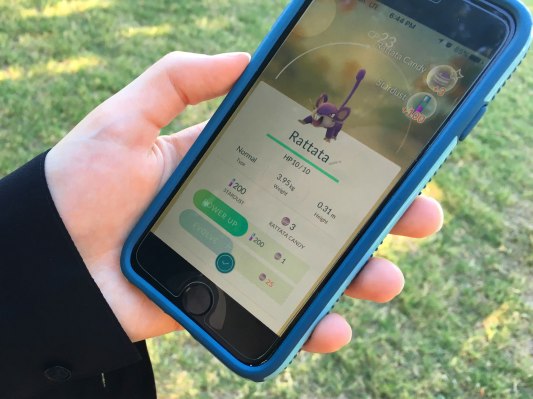Pokémon Go may be the most downloaded app in its first week post-launch ever, and is said to be raking in some $1.6 million daily on iOS alone, but a new report out on Friday suggests that the popular game’s paying user base may have already shrunk. According to data from Slice Intelligence, the app’s paying users peaked mid-July when the game had 56 percent more paying players than all other mobile games combined — a remarkable figure. But since July 15th, the game’s group of paying players has shrunk by 32 percent, the report claims.
Players spend real money to buy PokéCoins in Pokémon Go, which allows them to buy items that can be used in the game, like Poké Balls, Lure Modules, Lucky Eggs, Incense and more.
Because of Pokémon Go’s massive footprint and traction, as of July 15th, the purchase of these PokéCoins accounted for 52 percent of the entire mobile gaming market’s revenue, making Pokémon Go potentially the most lucrative game ever.
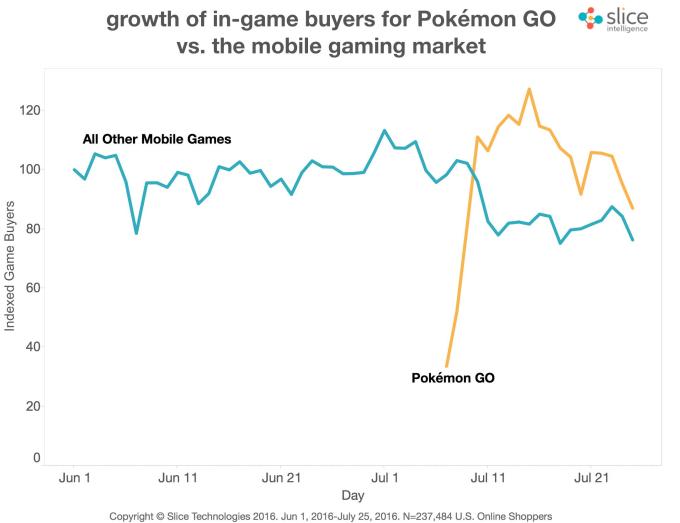
That being said, it’s common for mobile games to see its buying population decline at some point after launch.
And even though Pokémon Go may have already hit that point, if Slice’s data is accurate, it still held out a lot longer than any other mobile game. For example, Clash Royale’s paying users topped out the fourth day after launch, while Pokémon Go grew an entire week before it reached its plateau.
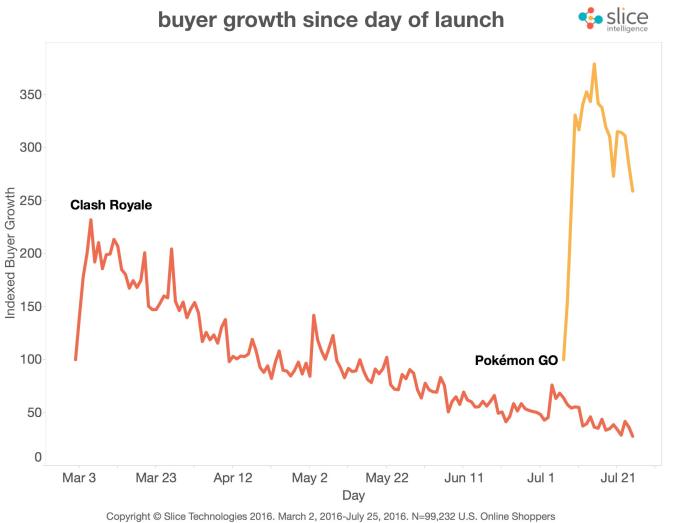
Slice’s data, for background, is extracted from e-receipts, including those that reference in-app purchases on iTunes and Google Play. For this study, the firm says it looked at receipt data from 237,484 players.
In addition, Slice found that the game has been strong with repeat buyers — again, more so than its peers. Half of paying users who bought an item in the game during its first week returned the next week, and spent, on average, $20 each. Clash Royale, on the other hand, only saw 39 percent of its players make a repeat purchase.
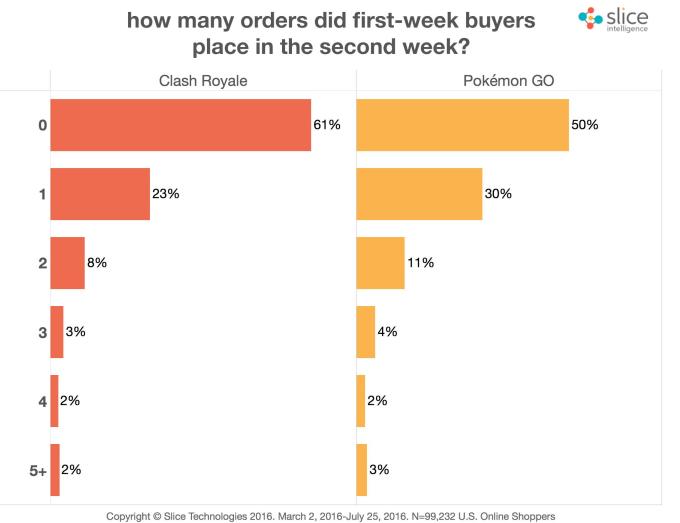
Also worth noting is the fact that Pokémon Go has managed to tap into a user base that historically hasn’t spent money in mobile games — at least, not in 2016. The report found that over 40 percent of those who spent in Pokémon Go hadn’t made even one other purchase in a mobile game all year.
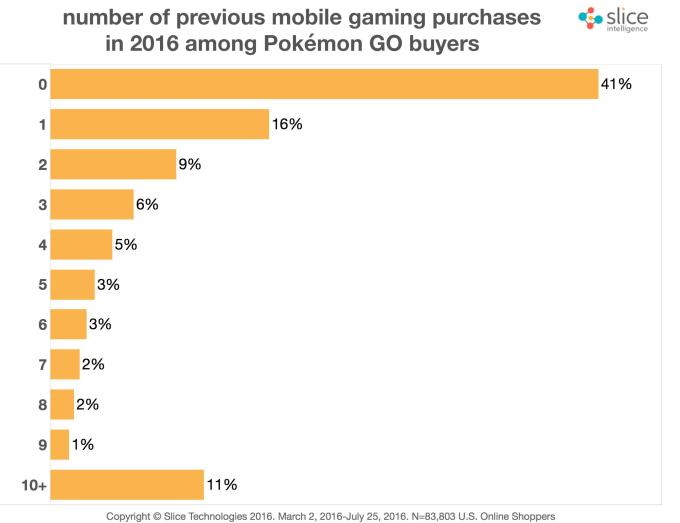
Slice’s report didn’t speak much as to why Pokémon Go may have reached its plateau, in terms of paying players, besides noting that it’s common for games to do so after launch.
However, unlike other games to have hit the market, Pokémon Go saw a significant number of more casual players join, thanks to its viral spread. Some of these players may have checked out the game and played actively for several days, including spending money, before dropping off to less obsessive levels of engagement. That doesn’t mean they’re gone for good, however.
Another factor that could have come into play is that the game has suffered from its popularity, with overwhelmed servers, crashes and freezing, leading to delayed launches in other regions. That could have impacted users’ ability to spend in the app, if not their desire.
Unrelated to spending, Slice also looked at the demographics of Pokémon Go users, and discovered that its male-female split is nearly 60:40 — like the gender makeup of the total gaming population. Players are also largely millennial (now 44 percent of users), and Gen Xers (one-third are.)
[gallery size="full" ids="1361342,1361341"]
